Advanced Search
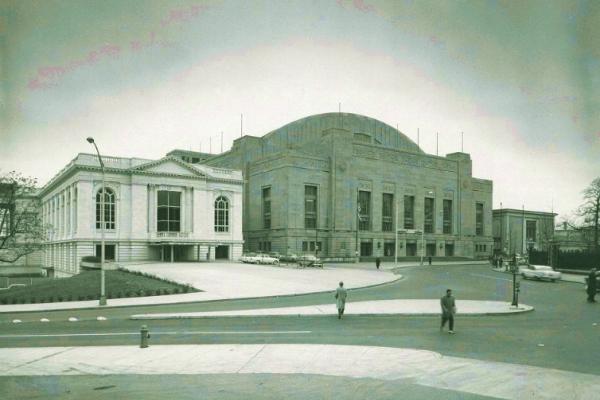
After 1929, a large portion of the multi-building Commercial Museum complex was razed and an auditorium was built in its place. This auditorium, later named the Civic Center, served as the city’s major convention and events center until the Spectrum arena was built in South Philadelphia in 1967. The Commercial Museum was closed in 1982. Shortly after the Pennsylvania Convention Center was built near the Reading Terminal Market in Center City in 1993, the Civic Center fell into disuse and was demolished in 2005.
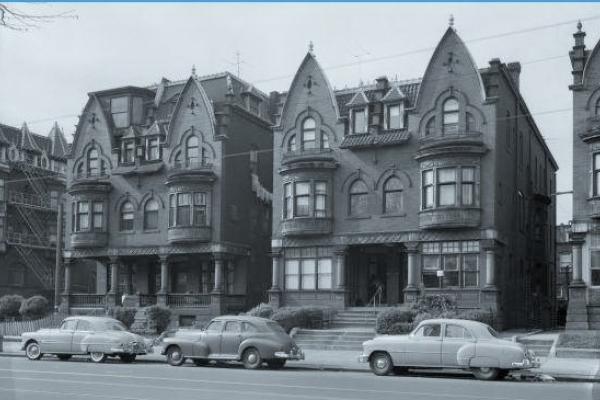
This photo shows the 4200 block of Parkside Ave., where the brewery owner and Parkside developer F.A. Poth and his family resided at the turn of the 20th century.

Simon Singer’s drug store and luncheonette at the southeast corner of Market and Farragut streets was a hangout for American Bandstand Regulars. Singer adopted the moniker “Pop” to advertise his connection with the show.
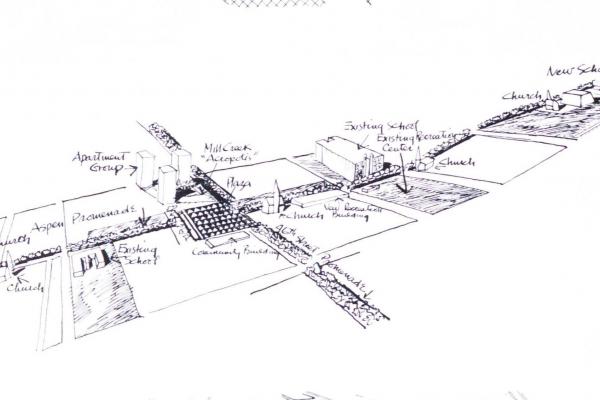
Louis I. Kahn’s diagram of his comprehensive plan for Mill Creek Homes. The drawing shows Aspen Street as the primary civic street of the development. Note Kahn’s designation of the high-rise apartment group as the Mill Creek “Acropolis.”
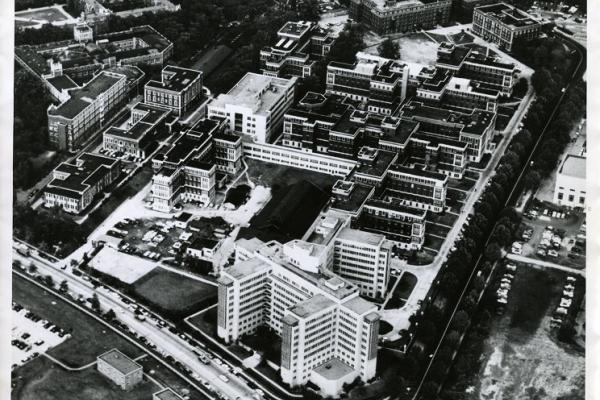
This aerial photo shows the PGH complex in 1954. The Charles K. Mills Neurological Building stands in the foreground, located at the southwestern end of the hospital complex.
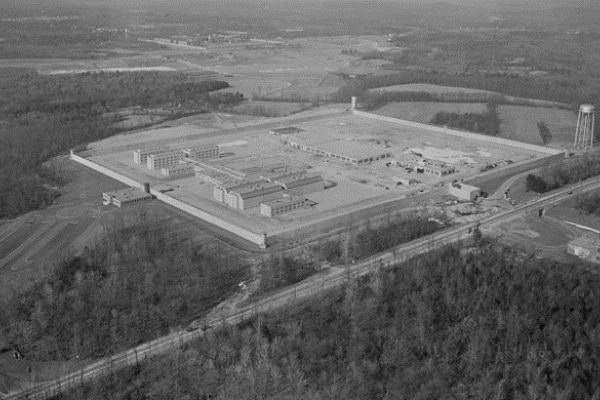
Norfolk State Prison, where Malcolm corresponded with Elijah Muhammad and took advantage of its well-stocked library to study the philosophical and historical influences that shaped Nation of Islam theology, as well as the history of U.S. slavery.
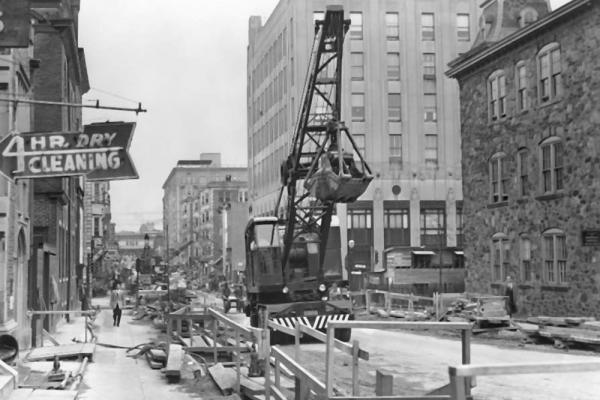
This 1955 photo shows 36th Street at Penn during subway construction.
Penn President Gaylord P. Harnwell’s leadership team provided $60,000 in seed funds to help establish the West Philadelphia Community Free School. The motivation was starkly political. In the late 1960s, the University faced ominous budget deficits accruing from large-scale campus redevelopment projects in the 1960s urban renewal era. The University sought to protect its huge investment in an expanded and modernized campus by controlling development in the low-income Market Street corridor a few blocks north of the campus.
Acting through a non-profit coalition of “higher eds and meds” named the West Philadelphia Corporation, which Penn dominated, Harnwell’s leadership team and their allies took a heavy hand in establishing the University City Science Center along Market Street. And they promised financial and logistical support for the creation of University City High School, which Penn and the School District of Philadelphia planned to be a specialized high school of science, comparable to Bronx Science High School of New York City and affiliated with the University City Science Center.
In Becoming Penn: The Pragmatic American University, 1950–2000 (Philadelphia, 2015), John Puckett and Mark Lloyd offer a “reasoned speculation” as to why the Harnwell administration decided to shift University support from the high school project to the Community Free School. First, vocal Black and White activists strongly opposed a high school of science, believing it would favor the children of University City’s white-professional-managerial elites. Perhaps of greater significance, Penn worried that the perennially underfunded school district would be unable to fulfill its end of the bargain and leave the now cash-strapped University holding the bag. “With Jessica Orliff, who wrote a scholarly paper on University City High School, we would also conjecture that the University’s role in the West Philadelphia [Community] Free School presented an honorable and relatively inexpensive way out of this dilemma” (p. 113).
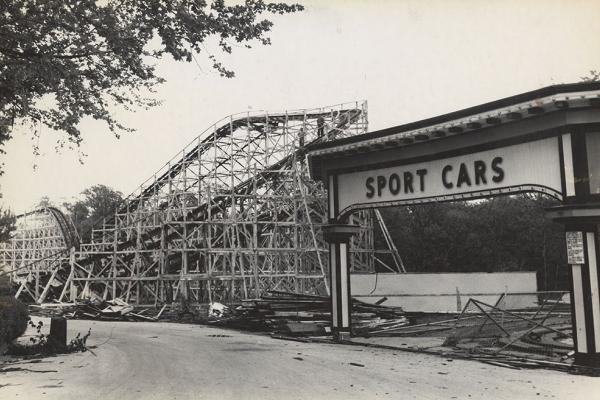
Deprived of public transportation access since 1946, Woodside Park in the postwar era may have been worth more to real-estate developers than to amusement park entrepreneurs. At all events, the park was demolished in 1955, and a sizable portion of the land was sold for residential and commercial development. Woodside Park’s famed Dentzel Carousel, now housed at the Please Touch Museum, only a mile from its original home, is the park’s only surviving attraction.

This 1956 photo shows the demolition of the 32nd St. station of the Market Street El. Removal of above-street tracks extended to 45th St., and the El stations at 36th and 40th streets were taken down.
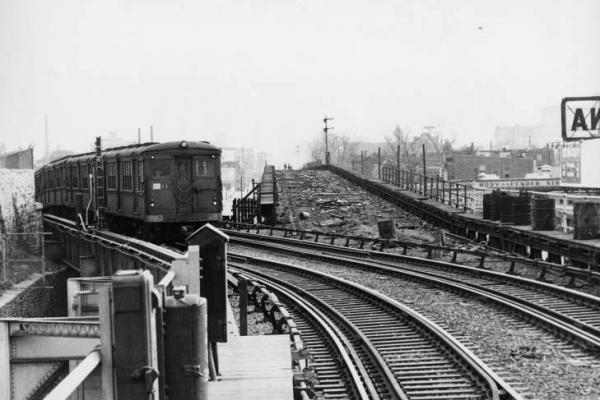
This 1956 photo shows a train arriving from the 45th Street portal at the 46th Street station of the Market Street Elevated. Remnant tracks extending east from 45th Street are in the process of removal.

The hard living experienced by impoverished African American women necessitated major adjustments on the hospital’s part. Responding to the high incidence of premature births, which were linked to poor nutrition, pre-natal cigarette and alcohol use, problems with sanitation, and high levels of stress, the hospital operated six nurseries for premature babies. The photo shows one of these nurseries in 1956.